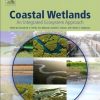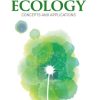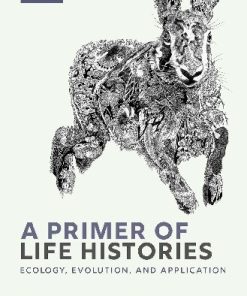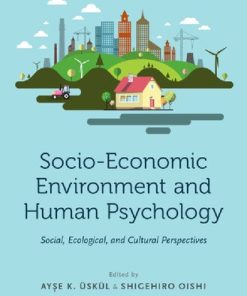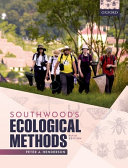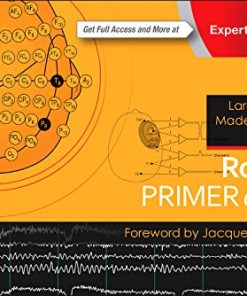A Primer of Ecological Aquaculture 1st edition by Dietmar Kültz 0192590831 9780192590831
$50.00 Original price was: $50.00.$25.00Current price is: $25.00.
A Primer of Ecological Aquaculture 1st edition by Dietmar Kültz – Ebook PDF Instant Download/DeliveryISBN: 0192590831, 9780192590831
Full download A Primer of Ecological Aquaculture 1st edition after payment.
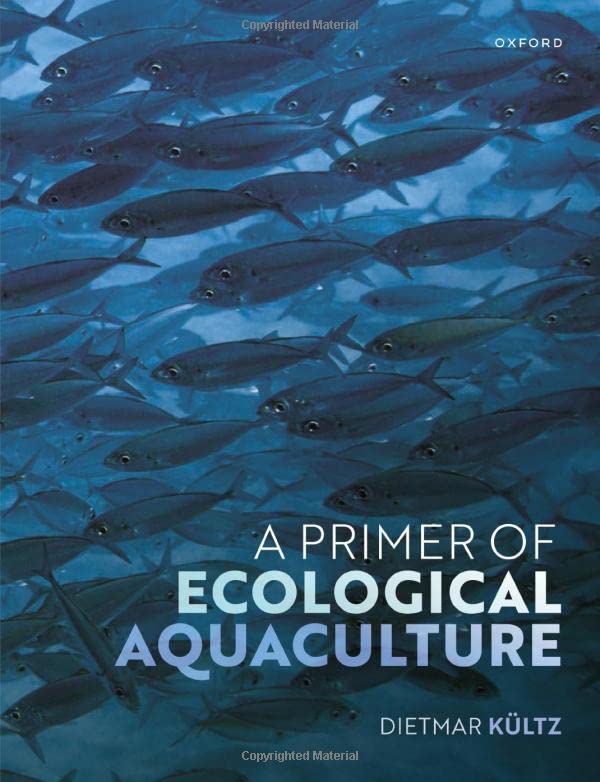
Product details:
ISBN-10 : 0192590831
ISBN-13 : 9780192590831
Author : Dietmar Kültz
Aquaculture exemplifies the ongoing global struggle to strike a sustainable balance between the conflicting needs of a rapidly increasing world population, human health, ecosystem health, the welfare of wild and domesticated animals, and the economic principles of globalized economies. On the one hand, aquaculture has great potential for providing us with a healthy and nutritious food supply whilst alleviating pressure on captive fisheries and reducing fisheries-induced habitat destruction, overfishing, genetic modification of wild populations, and wholesale waste of bycatch. On the other hand, aquaculture relies heavily on clean water, an increasingly precious (and dwindling) resource that is subject to intense pressure of being used for many competing objectives. This concise primer introduces students to the basic concepts, opportunities, and challenges of aquaculture with an emphasis on ecological considerations. It provides a critical assessment of current aquaculture practices from a broad, interdisciplinary perspective and from the standpoint of how best to align the two major (and often conflicting) goals of future aquaculture development: minimizing reliance on ecosystem services whilst maximizing productivity. A Primer of Ecological Aquaculture provides an accessible and authoritative overview for a wide range of undergraduate majors ranging from biology, engineering, and environmental policy to business and management. It will also appeal to a more general academic audience who wish to gain a current overview of the field.
A Primer of Ecological Aquaculture 1st Table of contents:
Part 1: General Principles of Ecological Aquaculture
1 Aquaculture terminology and basic concepts
1.1 What is aquaculture?
1.2 Sustainable aquaculture development
1.3 Cell-based seafood
1.4 Aquaculture concepts and terminology
Key conclusions
References
2 The historical origins of aquaculture
2.1 The earliest records of aquaculture practices
2.2 Religious drivers of aquaculture development in Africa and Assyria
2.3 Origins of freshwater aquaculture and fish domestication in Asia
2.4 Freshwater aquaculture origins in Europe
2.5 Carp domestication in Central Europe
2.6 The development of mariculture
2.7 Origins of ecologically sustainable mariculture in Hawai’i
2.8 Diversification of aquaculture following the industrial revolution
2.9 Aquaculture intensification and the emergence of invasive species
2.10 Blue Revolution: an upsurge of aquaculture research and development
2.11 The rising ecological impact of aquaculture and sustainability concerns
Key conclusions
References
3 Seafood and beyond: key aquaculture objectives
3.1 Economic benefits as drivers of aquaculture
3.2 Aquaculture relieves pressure on capture fisheries
3.3 Production of seafood for human consumption
3.4 Aquaculture for restocking lakes, rivers, and the ocean
3.5 Culture of ornamental animals and plants
3.6 Production of jewellery and souvenirs
3.7 Aquaculture production of secondary metabolites and proteins
3.8 Culture of aquatic organisms to aid ecosystem restoration
3.9 Bait production
Key conclusions
References
4 Aquaculture systems as mesocosms
4.1 The diminishing boundary between capture fisheries and aquaculture
4.2 Minimizing reliance of aquaculture on ecosystem services
4.3 Extensive versus intensive aquaculture: which is more sustainable?
4.4 Microcosms for ornamental aquaculture
4.5 Mesocosms for economically and ecologically sustainable aquaculture
4.6 Balancing trophic levels in mesocosms
Key conclusions
References
5 Integrated multitrophic polycultures
5.1 Polycultures are more ecologically sustainable than monocultures
5.2 Multitrophic polycultures of animals with plants
5.3 Pros and cons of polycultures
5.4 Decomposers: a critical link in multitrophic polycultures
5.5 Bioflocs technology
5.6 Integration of aquaculture with agriculture
Key conclusions
References
6 Domestication of aquaculture species
6.1 Trait selection during domestication
6.2 Domestication by breeding-based artificial selection of traits
6.2.1 Phenotype selection and crossbreeding
6.2.2 Genotype selection using genetic markers
6.2.3 Induction and selection of altered karyotypes
6.3 Domestication by genetic engineering
6.3.1 Genetic engineering by non-specific DNA insertion
6.3.2 Genetic engineering by gene targeting/editing
6.4 GMOs in aquaculture
6.5 Domestication effects during stock enhancement and sea ranching
Key conclusions
References
Part 2: Biology and Culture of Aquatic Species
7 Overview of aquaculture species diversity
7.1 Introduction
7.2 Basic concepts of taxonomy and phylogenetics
7.3 Aquaculture species within the network of life
7.4 Predominant aquaculture species
Key conclusions
References
8 Environmentally sustainable plant aquaculture
8.1 Marine macroalgae (seaweed)
8.1.1 Seaweed farming methods
8.1.2 Seaweed diseases
8.2 Aquatic and semi-aquatic freshwater macrophytes
8.2.1 Non-food uses of aquatic freshwater plants
8.2.2 Utilization of semiaquatic floating plants for aquaponics
8.3 Aquaculture of microalgae
8.3.1 Aquaculture systems for production of microalgae
8.4 Ecological sustainability prospects
Key conclusions
References
9 Aquaculture of sponges and cnidarians
9.1 Sponges
9.1.1 Body plan and cell types
9.1.2 Symbioses
9.1.3 Reproduction
9.1.4 Growth
9.1.5 Bath sponge farming
9.1.6 Bioactive metabolites
9.1.7 Ecological sustainability prospects
9.2 Cnidarians (jellyfish and corals)
9.2.1 Jellyfish aquaculture
9.2.2 Aquaculture of ornamental corals
9.2.3 Coral aquaculture for ecological conservation
Key conclusions
References
10 Mollusc aquaculture
10.1 Oysters
10.1.1 Oyster development and hatchery production of larvae
10.1.2 Extensive oyster grow-out
10.2 Mussels
10.3 Clams
10.4 Scallops
10.5 Marine pearl oysters and FW pearl mussels
10.5.1 Composition of bivalve shells and pearls
10.5.2 FW pearls
10.5.3 Marine pearls
10.5.4 Pearl harvest
10.6 Abalone
10.6.1 Hatchery production of abalone larvae
10.6.2 Abalone grow-out
10.7 Ecological sustainability of mollusc aquaculture
10.7.1 Improving the ecological sustainability of mollusc aquaculture
10.7.2 Invasiveness of aquaculture molluscs
10.7.3 Food safety considerations
10.7.4 The role of mollusc aquaculture for species conservation
Key conclusions
References
11 Crustacean aquaculture
11.1 Overview of crustacean aquaculture
11.2 Whiteleg shrimp and other marine shrimps
11.2.1 Shrimp hatcheries and nurseries
11.2.2 Shrimp grow-out
11.3 Euryhaline crabs
11.3.1 Mitten crab hatcheries and nurseries
11.3.2 Mitten crab grow-out
11.3.3 Mud crab aquaculture
11.4 Freshwater prawns
11.4.1 Prawn hatcheries
11.4.2 Prawn grow-out
11.5 Freshwater crayfish
11.6 Brine shrimp as live food for aquaculture
11.7 Ecological impact and sustainability prospects
11.7.1 Wastewater containment and treatment
11.7.2 Recycling of non-seafood by-products and feed waste
11.7.3 Containing invasiveness and the spread of pathogens
Key conclusions
References
12 Ornamental fishes
12.1 Economic value of ornamental fishes
12.2 Aquaria as microcosms
12.3 FW ornamental fishes
12.4 Marine ornamental fishes
12.4.1 Anemonefish aquaculture
12.5 Advantages of ornamental fishes produced by aquaculture
12.6 The impact of public media and perception on ornamental fishes
12.7 Invasiveness of ornamental fishes
Key conclusions
References
13 Freshwater fishes
13.1 Carps
13.1.1 Diverse feeding strategies of different carp species
13.1.2 Captive reproduction and culture of common carp
13.1.3 Carp polyculture systems
13.2 Tilapia
13.2.1 Extreme environmental tolerance of tilapia species
13.2.2 Tilapia aquaculture systems
13.2.3 Minimizing unwanted reproduction of tilapia
13.2.4 Tilapia hybrids and transgenics
13.3 Catfishes
13.3.1 Channel catfishes
13.3.2 Torpedo catfishes
13.3.3 Shark catfishes
Key conclusions
References
14 Anadromous fishes
14.1 Salmon
14.1.1 Hatchery phase in FW
14.1.2 Smoltification
14.1.3 Grow-out phase in mariculture
14.1.4 Salmonid feeds
14.1.5 Sea ranching of salmon
14.2 Trout
14.2.1 Rainbow trout hatcheries
14.2.2 Rainbow trout grow-out
Key conclusions
References
15 Catadromous and marine fishes
15.1 River eels
15.1.1 Eel life cycle
15.1.2. Aquaculture grow-out of eels
15.1.3 Eel aquaculture challenges
15.2 Milkfish
15.3.1 Milkfish life cycle
15.3.2 Milkfish nursery ponds and hatcheries
15.3.3 Milkfish grow-out
15.2.3 Sustainable development of milkfish aquaculture
Key conclusions
References
Part 3: Water Quality Parameters
16 Abiotic parameters
16.1 Temperature
16.1.1 Temperature range experienced by aquatic organisms
16.1.2 Temperature tolerance of aquaculture organisms
16.1.3 Temperature monitoring and adjustment in aquaculture
16.2 Photoperiod
16.3 Turbidity
16.4 Salinity
16.4.1 Salinity scale of environmental waters
16.4.2 Salinity tolerance of aquaculture organisms
16.4.3 Salinity monitoring
16.5 Dissolved oxygen
16.5.1 Hypoxia
16.5.2 Aeration devices
16.5.3 Measurement of DO concentration
16.6 The aquatic carbonate system (CO2, hardness, pH)
16.6.1 Water acidification due to climate change
16.6.2 Water alkalinization by liming
16.6.3 Water hardness
Key conclusions
References
17 Feeds, waste, and stress
17.1 Classification of aquaculture systems based on their inputs and outputs
17.1.1 Management of aquaculture inputs and outputs
17.2 Aquaculture feeds
17.2.1 Live food
17.2.2 Formulated feeds
17.2.3 Nutritional diseases
17.3 Aquaculture waste
17.3.1 Fertilizer-induced eutrophication and hypoxia
17.3.2 Pharmaceuticals and toxins
17.3.3 Waste handling by different aquaculture systems
17.3.4 Mechanical removal of particulate, undissolved waste
17.3.5 Biological recycling and removal of dissolved waste
17.3.6 Wastewater reconditioning by gas exchange and sterilization
17.4 Minimizing stress and maximizing welfare of fish and invertebrates
17.4.1 Common stresses and their symptoms encountered in aquaculture
17.4.2 Indicators of stress
17.4.3 Welfare of aquatic animals
Key conclusions
References
18 Infectious diseases
18.1 Biosecurity
18.1.1 Infectious disease susceptibility and transmission
18.2 Animal defence mechanisms against infectious diseases
18.2.1 Physical defences of aquaculture animals
18.2.2 Innate immunity of fish and invertebrates
18.2.3 Adaptive immunity of vertebrates
18.3 Viral diseases (viroses)
18.3.1 Viroses of aquaculture animals
18.3.2 Diagnosis and treatment of viroses
18.4 Bacterial diseases (bacterioses)
18.4.1 Bacterioses of aquaculture animals
18.4.2 Diagnosis and treatment of bacterioses
18.5 Fungal diseases (mycoses)
18.5.1 Mycoses of aquaculture animals
18.5.2 Diagnosis and treatment of mycoses
18.6 Diseases caused by protozoans and macroparasites (parasitoses)
18.6.1 Microparasites of aquaculture animals
18.6.2 Macroparasites of aquaculture animals
18.6.3 Diagnosis and treatment of parasitoses
18.7 Disease prophylaxis
18.7.1 Treatment of contamination sources
18.7.2 Regular health monitoring
18.7.3 Behavioural and morphological symptoms of disease
18.7.4 Preventative measures
18.7.5 Generation of disease-resistant strains
18.7.6 Sanitation and hygiene
People also search for A Primer of Ecological Aquaculture 1st:
environmental benefits of aquaculture
a primer of ecological statistics
a primer of ecological genetics
a primer of ecology pdf
a primer of ecology
Tags: A Primer, Ecological Aquaculture, Dietmar Kültz,
You may also like…
Biology and other natural sciences - Biology
Uncategorized
Earth Sciences - The Environment
Biology and other natural sciences - Microbiology
Biology and other natural sciences - Ecology
Science (General)


